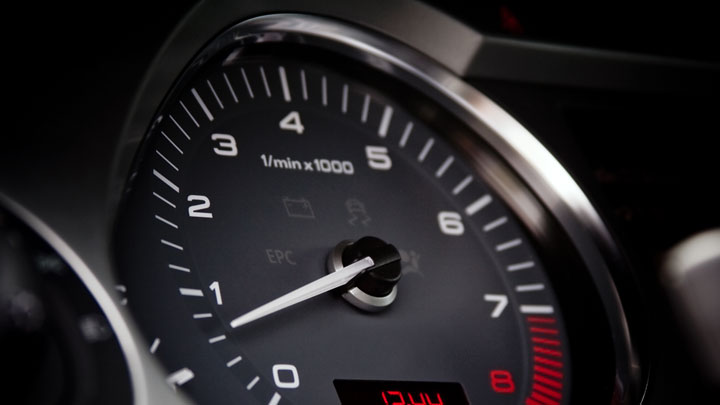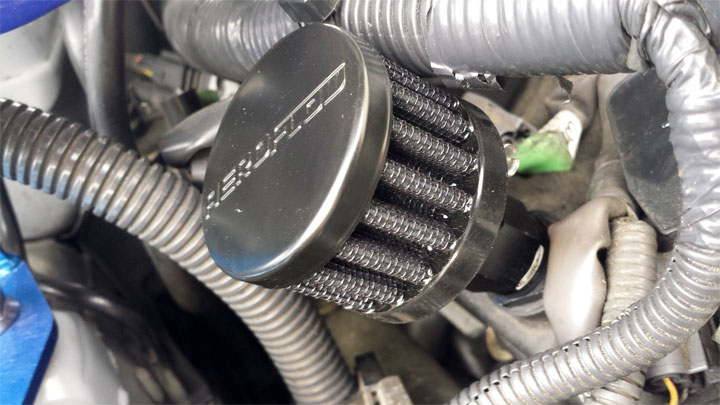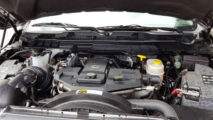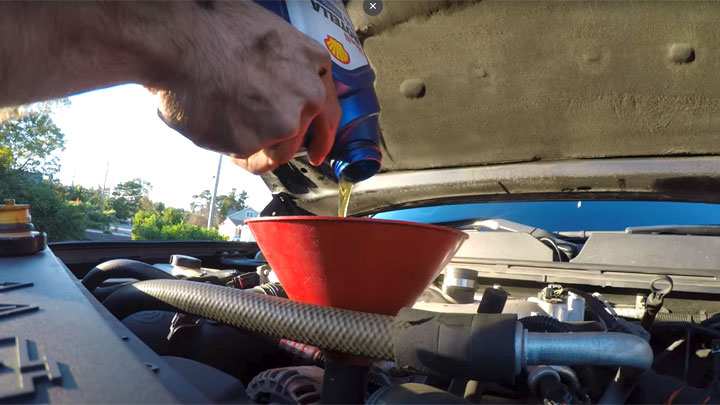Last Updated on October 10, 2022
The crankcase breather filter, also called a crankcase vent filter (CCV), is part of a vehicles crankcase ventilation system. This filter is a part of the crankcase ventilation system in internal combustion engines of a relatively small number of vehicles including vintage/muscle cars, race cars, and motorcycles. But it’s found on others including diesel engines such as the Dodge Cummins.
As the engine runs, its pistons push gases into the crankcase. These gases cause a build-up of pressure that robs the engine of its operational power. The purpose of the crankcase system is to enhance the relieving of this pressure, as it releases excess gas to the environment or reroutes it back to the engine.
The gases released may contain some debris, oil particles, and other contaminants, requiring the need for the crankcase breather filter. Let’s take a closer look at how this vital component works and what to do when it malfunctions.
What Does a Crankcase Breather Filter Do?

When pressure builds up inside the engine, there are two ways to release or reroute it.
You can opt to release the pressure through the PCV (positive crankcase ventilation) valve or the crankcase ventilation filter, and in this scenario, the focus is on releasing excess gas pressure using the crankcase ventilation filter.
Typically, there is no difference in the working of the CCV filter and other types of filters in the car engine. This filter removes oil particles and other debris in the gases while releasing excess pressure on the environment.
Also, this crankcase breather filter prevents dirt from getting into the crankcase, particularly during the engine cooling process, and helps to keep your crankcase clean. Ultimately, the crankcase breather prevents oil contamination, which can have far-reaching adverse impacts on your engine.
See Also: Is a Cold Air Intake Worth It?
Where is the Crankcase Vent Filter Located?
The CCV filter usually sits on top of the valve cover or you will find it on the breather hose that is on top of the crankcase (connected to the air intake). This section of the engine is where positive pressure is released, and air intake to and from the atmosphere takes place.
Symptoms of a Blocked Crankcase Breather Filter
As noted above, the crankcase breather filter plays a crucial in the proper running of your engine system.
Like other parts in a car, it requires regular servicing or replacement, as the debris from internal or external contaminants can quickly clog or block it.
Your vehicle will alert you when there is an issue on your crankcase breather filter by displaying any of the following three symptoms.
#1 – High Idle

A blocked filter affects your car idling speed.
When there is clogging on the filter, it can lead to a high idling speed. This aspect is due to the blocking or leaking of oil on the engine; therefore, a change in the idling speed is a good indication of issues with your car’s crankcase breather filter if it has one.
#2 – Oil leakage

In most cases, oil leakage is the first sign of a clogged filter.
The primary role of the filter is to prevent the entry of debris and other contaminants into the engine while easing pressure from the engine. When the filter blocks, there is a high chance of a pressure building up, and this high pressure can lead to the gasket and seals blowing up.
As a result, the oil will start to leak from your car engine or you may notice oil or sludge in your intake manifold.
See Also: Signs of a Leaking Valve Cover Gasket
#3 – Poor Engine Performance

Another notable symptom of a blocked CCV filter is a decrease in your vehicle’s engine performance.
The clogged filter affects the air-fuel, which impacts the car’s acceleration and power. You may particularly notice this issue when driving at low speeds.
However, there are quite a few other components that affect engine performance. That’s why it’s essential to consult your dealership, an independent professional mechanic, or an auto repair shop to run an exclusive diagnosis on your car.
Why Is There Oil Coming Out of the Crankcase Breather?
If you notice engine oil coming out from your crankcase breather filter, you may need to check your seals. Worn out seals can lead to an oil blowback in the inlet valves, which in turn leads to a pressure build-up that pushes oil back to the inlet filter.
The excess oil then pushes out through the crankcase breather filter. Also, this condition can occur due to increased crankcase pressure, which causes oil to leak beyond the oil catch can, gaskets, and seals. This CCV filter subsequently blows out this engine oil.
Crankcase Filter Replacement Cost
Best places to order parts? See: 19 Best Online Auto Parts Stores

The cost of a crankcase breather filter replacement depends on your car’s model. Additionally, there are significant price variations when it comes to the material, mounting features, filter design, and other vital aspects of your CCV filter.
Different dealerships and auto repair shops will charge different prices for them. Independent mechanics can also come to your home to replace this filter for you. But for the most part, the replacement job is simple if the filter is in an easy to access location.
On average, expect to pay around $10 to $80 for the filter. Most crankcase breather filters will be under $20 (including reusable ones such as from K&N) but some which are part of a larger assembly (such as on the Cummins 6.7 engine), will cost near the upper end of the range.
If you decide that you don’t feel comfortable replacing the filter yourself, any mechanic will be able to do it for you in a few minutes. Keep in mind that there is usually a minimum labor rate so tack on another $50 to $100 for the job.
All together, expect to pay between $60 and $180 for a professional to replace the filter.
On average, expect to pay between $200 and $300 to replace your crankcase breather filter. Note that the parts alone will cost you about $100 to $105, and expect to pay a labor cost of between $90 and $120.
Always choose a CCV filter that can withstand the extreme pressure inside the engine and one that comes with quality filter components like baseplates and filter gaskets.
These breather filters can get dirty and clogged up fairly quick so make it a point to replace it at least at the same time as when you replace spark plugs.





Thank you for the suggestions. Good and informative post. Thanks again for sharing this post.
It very nice explanation madam. Clearly understood this topic. Thank u madam. To keep this in another topic u will send it from Google. Cover the all the engine parts. Clearly thoroughrized in this topic mam.
This information is very useful. 1990 Ford E150, 5.0, 8 cylinder. I have oil coming out of the valve cover pipe that goes to the air filter breather element. You say that this could be a problem with seals failing. Which seals are you referring to? Thanks so much for your help.
There is often a seal or grommet around the PCV valve. Could this be the leak you are experiencing?
I have installed an oil catch can between the pcv valve and intake manifold on my 2016 Hyundai Genesis/G80 sedan with the 3.8L gdi motor, but I’m skeptical of installing a breather filter on the crankcase side going to the air intake tube, thinking it might cause a vacuum leak. If I plug the air intake tube fitting, will I be able to install a crankcase breather filter without worrying about vacuum leaks? Please help
I’m not real familiar with G80s, but I know Subarus don’t handle PCV venting well without being tuned for it. For instance, an IAG competition AOS requires a tune because it vents air from the PCV system to atmosphere. Your catch can setup sounds similar to me. IAG’s street series AOS on the other hand recirculates that air from the crankcase back into the intake.
Speed density setups (cars that use MAP sensors instead of MAF sensors) tend to be a little better at handling that kind of change without any aftermarket tuning. If your fittings are tight enough, you shouldn’t have to worry about vacuum leaks per se, but you might need to be concerned about venting metered air that is supposed to go back into the intake. This could throw off the air fuel ratio if the car is unable to adjust for the change on its own. Just something to look into, hope this helps.
I have K11 Micra. It’s crankcase breather connecting the air intake filter is broken and the hose is just open to the environment. So what are consequences of let it be open? Is it only release of blow by debris to the environment?TIA
For one thing, it’s not great for the environment to do that. Some cars are tuned in such a way that any metered air that is vented to atmosphere (even from the PCV system) could cause issues with the air fuel ratio, leading to symptoms similar to a vacuum leak. I am not familiar with the Micra so I don’t know if that car has a system that is sensitive to that type of thing.